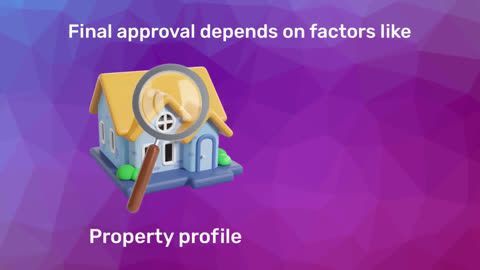Understanding the intricacies of monetary policy is crucial for anyone interested in finance or economics. Among the many tools available to central banks, the repo rate and reverse repo rate are two of the most significant. These rates play a pivotal role in controlling the money supply, inflation, and overall economic stability.
The repo rate is the interest rate at which commercial banks borrow funds from the central bank by selling their securities, while the reverse repo rate is the rate at which the central bank borrows money from commercial banks. These rates are adjusted by the central bank to regulate liquidity in the economy.
A higher repo rate makes borrowing costlier, reducing money supply and controlling inflation, whereas a lower repo rate encourages borrowing and spending, boosting economic growth. Conversely, the reverse repo rate helps absorb excess liquidity by offering banks a secure way to park their funds.
These rates significantly impact loan interest rates, particularly home loans, as banks adjust lending rates based on changes in the repo rate. Understanding these factors can help individuals make informed financial decisions.
What is the repo rate?
The repo rate, short for repurchase rate, is the rate at which the central bank of a country (such as the Reserve Bank of India) lends money to commercial banks. These loans are typically short-term, often overnight, and are secured by government securities. The central bank uses the repo rate as a tool to manage liquidity in the economy and control inflation.
- Control inflation: By increasing the repo rate, the central bank makes borrowing more expensive for commercial banks. This leads to higher interest rates for consumers and businesses, reducing spending and slowing down inflation.
- Encourage borrowing: Conversely, by lowering the repo rate, borrowing becomes cheaper, encouraging spending and investment, which can stimulate economic growth.
RBI cuts repo rate by 100 bps in 2025
In 2025, the Reserve Bank of India (RBI) has cut the repo rate by a total of 100 basis points (bps). This includes two earlier reductions of 25 bps each, followed by a sharper 50 bps cut in the latest policy meeting. The move signals the RBI’s strong intent to boost credit growth and economic activity by lowering borrowing costs. The current repo rate is now more favourable for borrowers, especially those with loans linked to this benchmark.
Home loan borrowers, particularly those on floating interest rates linked to the repo rate, may benefit from reduced EMIs. However, not all borrowers will see immediate relief. Many loans are still linked to older benchmarks like the Marginal Cost of Funds-Based Lending Rate (MCLR), which responds more slowly to rate changes. This means the transmission of rate cuts may be delayed or only partially passed on by banks.
Even though repo rate-linked loans offer quicker and more transparent rate adjustments, not all borrowers have shifted to this model. Older loans tied to the MCLR or base rate continue to reflect slower changes. Despite this, the RBI’s rate cuts reflect a determined effort to revive lending and support economic momentum in 2025.
Repo rate today |
5.50% |
Reverse repo rate |
3.35% |
Bank rate |
5.75% |
Marginal standing facility rate |
5.75% |
Current repo rate in India
The current repo rate in India stands at 5.50%. On 6th August 2025, the Reserve Bank of India (RBI) decided to lower the repo rate by 50 basis points, bringing it down from 6% to 5.50% during the Monetary Policy Committee (MPC) meeting. The repo rate is the rate at which the RBI lends short-term funds to commercial banks. This move was aimed at easing borrowing costs, improving liquidity, and supporting economic growth. By reducing the repo rate, the RBI hopes to make loans more affordable for businesses and individuals, thereby boosting demand and overall financial activity.
What is the reverse repo rate?
The reverse repo rate is the interest rate at which the central bank borrows money from commercial banks. It acts as a tool to control excess liquidity in the economy and regulate inflation.
- Absorbing excess liquidity: When there is surplus money in the banking system, the central bank increases the reverse repo rate to encourage banks to deposit their excess funds, reducing money supply.
- Ensuring financial stability: By managing liquidity through the reverse repo rate, the central bank prevents excessive lending, which could lead to inflationary pressures or asset bubbles.
This rate plays a crucial role in shaping monetary policy and maintaining economic balance.
What is the reverse repo rate today?
As of June 24th, 2025, the Reserve Bank of India's reverse repo rate remains at 3.35%. This is the interest rate paid to commercial banks when they park excess funds with the RBI under the Liquidity Adjustment Facility (LAF). By offering this rate, the RBI absorbs surplus liquidity from the banking system, helping to stabilise monetary conditions. While the repo rate influences borrowing, the reverse repo helps regulate overall liquidity and keep inflation in check.
Key differences between repo rate and reverse repo rate
Repo and reverse repo rates are crucial tools used by central banks to manage liquidity and control inflation, influencing the flow of money in the economy.
Key aspect |
Repo rate |
Reverse repo rate |
Purpose and function |
Provides short-term loans to banks to inject liquidity and stimulate the economy. |
Absorbs excess liquidity from the banking system to control inflation and maintain stability. |
Impact on liquidity |
Lower repo rate increases liquidity by making borrowing cheaper for banks. |
Higher reverse repo rate decreases liquidity by encouraging banks to deposit surplus funds with the central bank. |
Influence on interest rates |
Directly affects interest rates on loans provided by banks. A higher repo rate increases loan interest rates. |
Indirectly affects interest rates by influencing the amount of money banks can lend. |
Lender and borrower |
The lender is the RBI, and the borrower is the commercial bank. |
The lender is the commercial banks, and the borrower is the Reserve Bank of India. |
Objective |
To manage a short deficiency of funds. |
To reduce the overall supply flow of money in the economy. |
Rate of interest |
Higher than the reverse repo rate. |
Lower than the repo rate. |
Interest charge mechanism |
Applicable through a repurchase agreement. |
Applicable through a reverse repurchase agreement. |
Mechanism of operation |
Commercial banks get funds from RBI using government bonds as collateral. |
Commercial banks deposit their excess funds with the RBI and earn interest on the deposit. |
Impact of higher rate |
Increases the cost of funds for commercial banks, making loans more expensive. |
Lowers the money supply in the economy as commercial banks park more funds with the RBI. |
Impact of lower rate |
Decreases the cost of funds for commercial banks, leading to lower interest rates on loans. |
Increases the money supply in the economy as banks lend more and reduce deposits with the RBI. |
Impact of repo rate and reverse repo rate on home loans
The repo rate and reverse repo rate significantly impact interest rates on various financial products, including home loans. When the repo rate is high, banks face higher borrowing costs from the central bank. Consequently, they increase interest rates on loans, including home loans, to maintain their profit margins. Conversely, when the repo rate is low, banks can afford to offer lower interest rates on home loans, making borrowing cheaper for consumers.
For instance, during periods of economic slowdown, central banks may lower the repo rate to stimulate growth. This reduction in the repo rate can lead to lower home loan interest rates, encouraging more people to invest in real estate. Therefore, understanding these rates can help potential homebuyers make informed decisions about the timing of their home loan applications.
Planning to buy your dream home? With repo rate changes creating favourable borrowing conditions, now could be the perfect time to explore home financing options. Bajaj Finserv offers competitive home loan rates starting from 7.45%* p.a Check your eligibility today. You may already be eligible, find out by entering your mobile number and OTP.
Impact on other financial products
Apart from home loans, the repo rate and reverse repo rate also affect other financial products, such as:
- Personal loans: Similar to home loans, the interest rates on personal loans are influenced by changes in the repo rate. A lower repo rate can result in lower interest rates on personal loans, making borrowing more affordable.
- Fixed deposits: The interest rates on fixed deposits (FDs) are also impacted by the repo rate. A higher repo rate can lead to higher interest rates on FDs, making them a more attractive investment option.
- Savings accounts: The interest rates on savings accounts may also fluctuate based on changes in the repo rate, although the impact is generally less pronounced compared to loans and fixed deposits.




